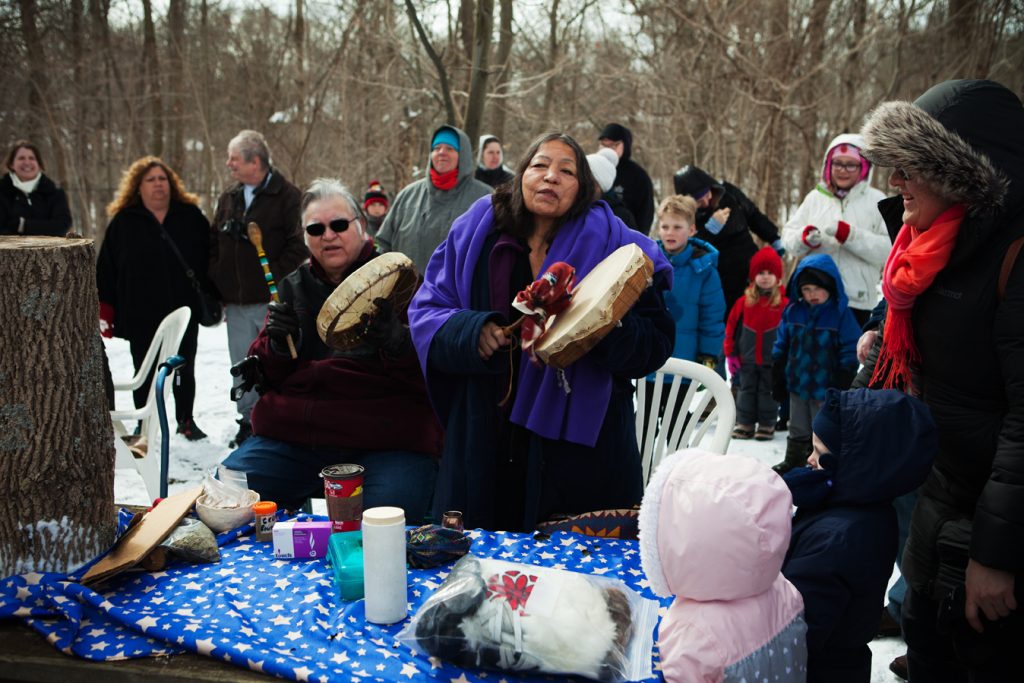Localizing the Sustainable Development Goals Must Include Indigenous Perspectives
The goal of the SDG Cities project is to support and enable a just, equitable and sustainable society. As we prepared to establish our priorities and design our program, we started asking ourselves how to integrate Indigenous perspectives into a project that stems from the worldview of industrialized and colonial societies.

In early 2021, 10C Shared Space and Pillar Nonprofit Network received funding from Employment and Social Development Canada (ESDC) to collaboratively develop the SDG Cities project. Through events, cohort-based training and applied research, SDG Cities will increase the number and strengthen organizations and purpose-driven businesses actively using and contributing to the United Nations Sustainable Development Goals (SDGs). Lessons learned from SDG Cities can also be applied in other Canadian cities to make progress towards the SDGs across the country.
The goal of the SDG Cities project is to support and enable a just, equitable and sustainable society. One of the original principles of the UN Sustainable Development Goals states that we should “leave no one behind…reaching the furthest behind first.” Despite the fact that, on average, Canada ranks high in areas like education, economic development, health and well-being compared to other nations, if only the Indigenous population is considered, Canada is in a much worse position.
As we prepared to establish our priorities and design our program, we started asking ourselves how to integrate Indigenous perspectives into a project that stems from the worldview of industrialized and colonial societies.
One of our first questions was about the name of the project itself, SDG Cities. We reflected on the word city itself and what it represents. City is an English word that comes from the Latin word “civitas” and the later French word “cité”. Originally, it referred to the people, and currently it refers to the place – a clear distinction. The word has become a part of our dominant colonial language.
Whether we use the term city, land or territory, there is an understanding of place as something passive and separate from us. Something that we can subdivide and possess. There isn’t an English word that conveys land as something that lives in us or something we belong to as Indigenous ways of knowing express. In Indigenous tradition, land evokes an ongoing relation, a reciprocity where we have much to listen and learn from the place we live in and from non-human beings.
“Regenerative cities are living, sacred organisms that sustain life and comprise healthy institutional organs; terrestrial and wetland arteries; connective tissues linking ecosystems and human communities and cultures; and a soul that embraces and nourishes all ways of being, knowing and creating.”
Tanya Chung-Tiam-Fook – Centre for Indigenous Innovation and Technology
What the word city represents in its physical manifestation is also a colonial construct. In general, the way our human settlements are organized and governed in Canada reflects the structures brought by settlers that suppressed the traditional ways of relating to the land. Our buildings, our streets, how we work and our relationship with the land represent a colonial mindset more than an Indigenous way of being where “a traditional territory does not refer to a history of ownership, but a history of reciprocal relationship, people and land shaping and adjusting to each other over a long stretch of time.” (Land, Language and Listening)
We asked ourselves: Should we use colonial language because we live in a colonized society and that is the language that represents our current reality? Or should we use a new language because it represents what we want to become?
Choosing the first, we would ignore the traditional ways of the original stewards of the land. Choosing the latter, we could make the project inaccessible to the very people that need to hear about it. In both cases, we feel a responsibility to be mindful of acknowledging the intergenerational trauma and ongoing oppression of the systems we are part of.
Maybe there are more than these two options. What if this is an “AND” instead of an “OR” question? What if we used the colonial language, and named it for what it is? What if we acknowledge the history and consider what it might look like to move forward together in a good way, with positive relationships. Through this project, we can create a path to take actions to dismantle or reshape oppressive systems and live in the tension of our current reality and our possible future.
The Indigenous Practitioner Perspectives on City Building organized by the Canadian Urban Institute shows some of those pathways. Inviting us to reexamine how we develop cities and how we can elevate and amplify indigenous voices among the ones who are designing our human habitats with twelve calls to action.
“What if we dared to indigenize the way we construct modern cities, integrate Indigenous knowledge systems and make them core to transform places and how people relate?”
Melanie Sack – Mi’kmaw Native Friendship Centre
Unpacking how we can dismantle oppressive systems while existing within them will bring about many more questions. This is the beginning of a dialogue that we want to sustain throughout the project and beyond. We will continue to share our progress towards integrating Ingidenous ways of knowing into mobilizing cities towards achieving the sustainable development goals as we build upon our existing relationships with our Indigenous neighbours to guide and participate in the project.
You can sign up here to get involved or learn more about the SDG Cities project.

